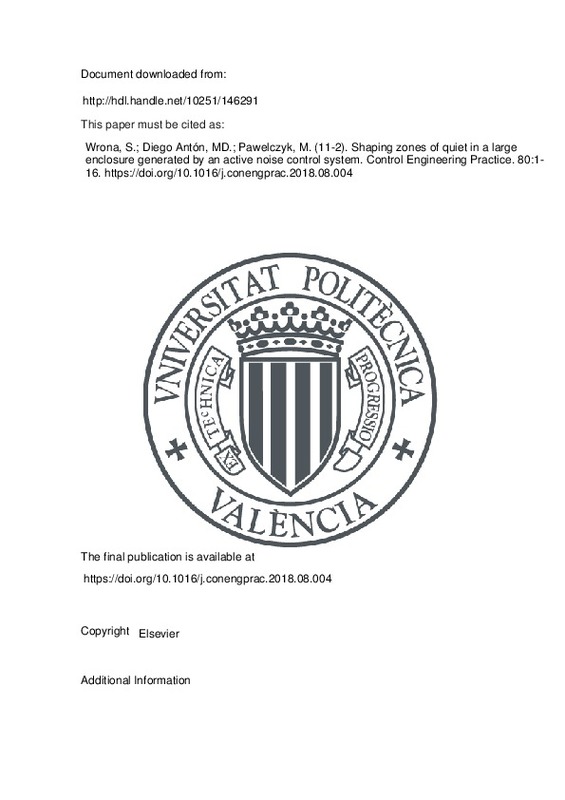JavaScript is disabled for your browser. Some features of this site may not work without it.
Buscar en RiuNet
Listar
Mi cuenta
Estadísticas
Ayuda RiuNet
Admin. UPV
Shaping zones of quiet in a large enclosure generated by an active noise control system
Mostrar el registro completo del ítem
Wrona, S.; Diego Antón, MD.; Pawelczyk, M. (2018). Shaping zones of quiet in a large enclosure generated by an active noise control system. Control Engineering Practice. 80:1-16. https://doi.org/10.1016/j.conengprac.2018.08.004
Por favor, use este identificador para citar o enlazar este ítem: http://hdl.handle.net/10251/146291
Ficheros en el ítem
Metadatos del ítem
| Título: | Shaping zones of quiet in a large enclosure generated by an active noise control system | |
| Autor: | Wrona, Stanislaw Pawelczyk, Marek | |
| Entidad UPV: |
|
|
| Fecha difusión: |
|
|
| Resumen: |
[EN] Performance of an Active Noise Control (ANC) system strongly depends on sensors and actuators spatial arrangement. It determines both achieved Noise Reduction (NR) levels and spatial distribution of obtained zones of ...[+]
|
|
| Palabras clave: |
|
|
| Derechos de uso: | Reserva de todos los derechos | |
| Fuente: |
|
|
| DOI: |
|
|
| Editorial: |
|
|
| Versión del editor: | https://doi.org/10.1016/j.conengprac.2018.08.004 | |
| Código del Proyecto: |
|
|
| Agradecimientos: |
The research reported in this paper has been supported by the National Science Centre, Poland, decision no. DEC-2017/25/B/ST7/02236, and by EU together with Spanish Government under Grant TEC2015-67387-C4-1-R b(MINECO/FEDER).[+]
|
|
| Tipo: |
|







![[Cerrado]](/themes/UPV/images/candado.png)


